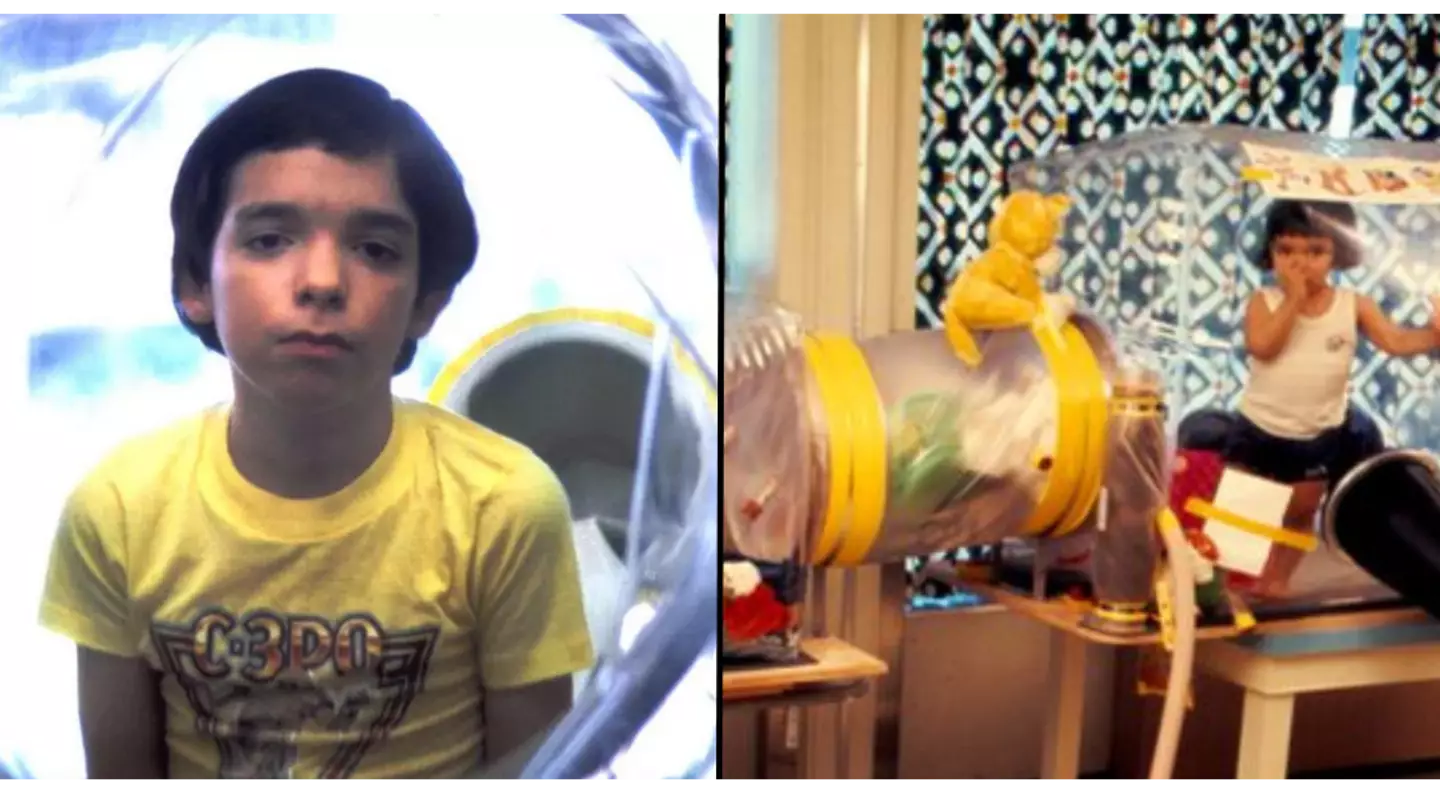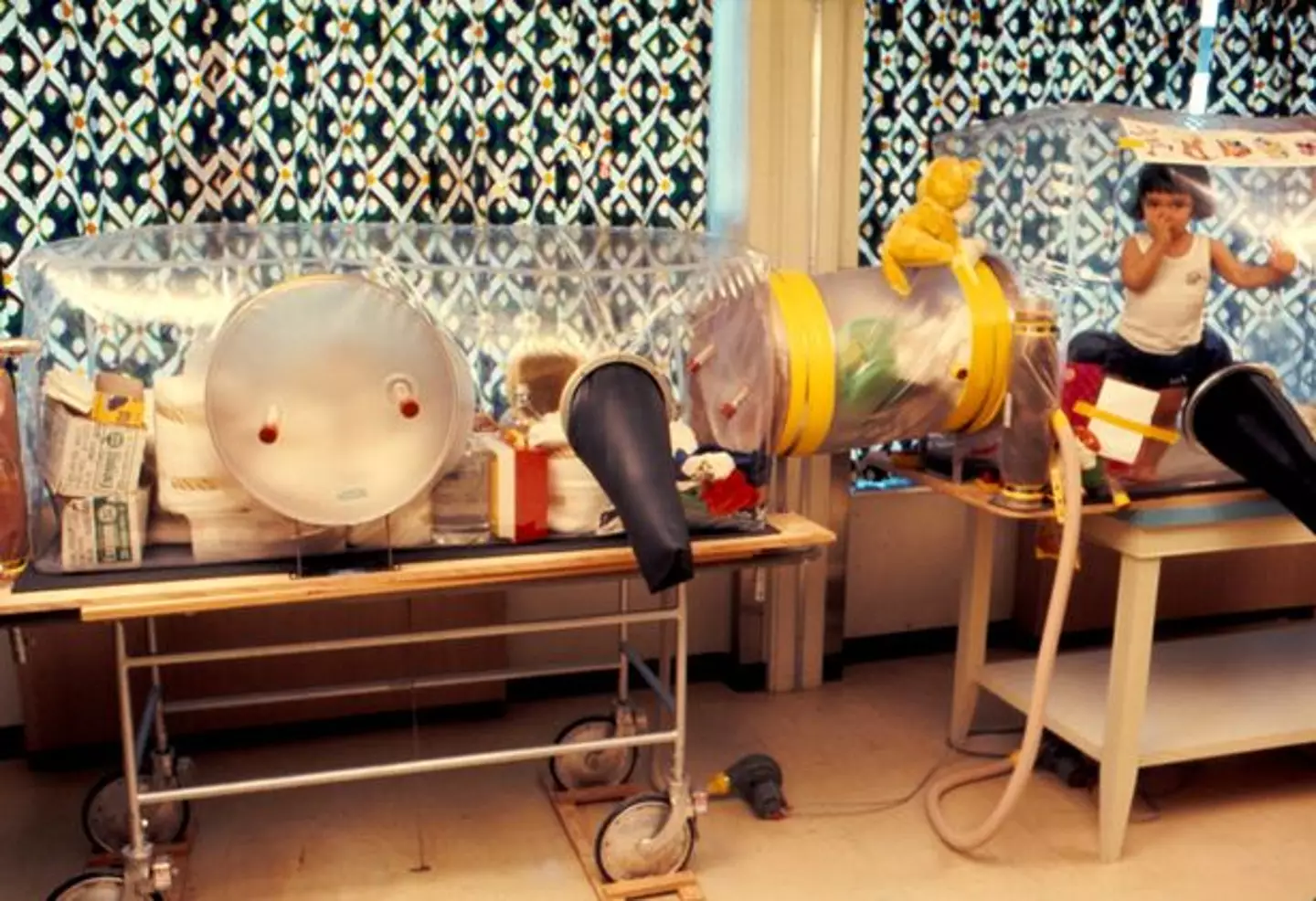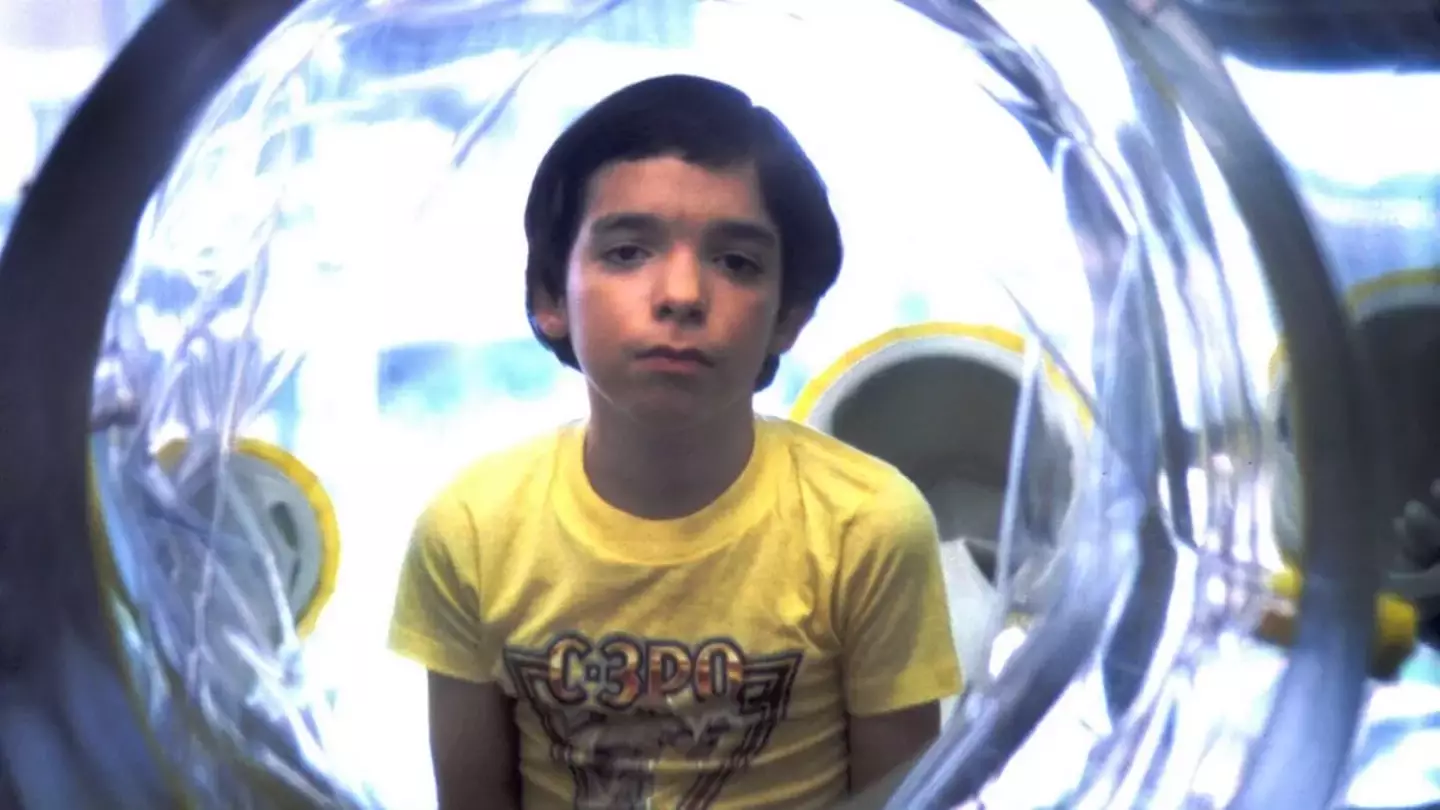
While the name of 'The Boy in the Bubble' wasn't made public during his life to protect him from media attention, his medical legacy has saved the lives of thousands since his tragically short life ended almost 40 years ago.
David Vetter was born in September 1971 with a rare genetic condition called 'severe combined immune deficiency' that killed his seven-month-old brother a year before.
The disease meant a single germ could kill him so, just 30 seconds after delivery, he was sealed inside an air-tight bubble with parents, Carol-Ann, 28 and David, unable to touch him.
Advert
You can watch more about David's tragically short life below:
The 'second womb' was his home until doctors repaired his immune system with a bone-marrow transplant - a feat that had only been performed on mice before.
But when it was was discovered that Katherine, David's four-year-old daughter, wasn't a perfect match for a donor, he faced an indefinite stay in isolation waiting for a match.
Advert
Everything he needed reached him via a system of air-locks.
While he eventually moved home to Shenandoah, David’s parents could only touch him through neoprene gloves.
“We were certainly confused but once we gathered ourselves, we said ‘Now what?’” Carol-Ann told 2014 documentary, The Boy in the Bubble.

Initially he was a happy child but, as time went on, critics compared him to a lab rat in a cage.
Advert
NASA made David a mini-spacesuit when he was four so he could leave the bubble, but he was so frightened, he only used it six times.
As he got older, he raised doubts about the future and often talked about death.
“David never questioned in the early years why he was in a bubble," said Carol-Ann.
"But as he grew up things became more difficult.
Advert
“I would notice David would spend a lot of time gazing outside. And he would see young boys on bicycles or he’d see kids tumbling in the grass. I sensed a sadness to him.”
But at the age of nine, David and his family received news from researchers in Boston, Massachusetts about a ground-breaking method to transplant 'incompatible' bone marrow.

On 21 October, 1983, doctors transfused two ounces of Katherine's marrow into David - and it looked like they'd found their cure.
Advert
But, without warning, David's temperature shot up to over 40°C, he began to bleed from the intestines and vomited blood.
Unable to treat the sick boy from his isolation bubble, doctors made the decision to take him out.
On 7 February, 1984, David was set free - but it wasn't the happy moment his family had dreamt about.
His condition continued to deteriorate and he fell into a coma on 22 February.

Carol-Ann said: “I asked if I could remove my glove and touch David.
“So I walked over and I took my glove off of my hand and I stroked the back of his hand – for the first and last time.”
She continued: “I don’t have regret, I don’t have blame.
“Any parent who has lost a child wonders if their brief life has meant something to the world. And science has said to me, yes.”
Why? David was killed by a type of cancer called Burkitt’s lymphoma.
A postmortem found Katherine’s marrow contained a dormant virus that awoke in David, spreading hundreds of malignant tumours - proving for the first time that a virus can cause cancer and revolutionising cancer research and medicine.
More than 90% of infants diagnosed with severe combined immune deficiency are now treated with happier outcomes via bone-marrow transplants thanks to 12-year-old David's heroic efforts and sacrifice.
Featured Image Credit: Baylor College of Medicine Archives